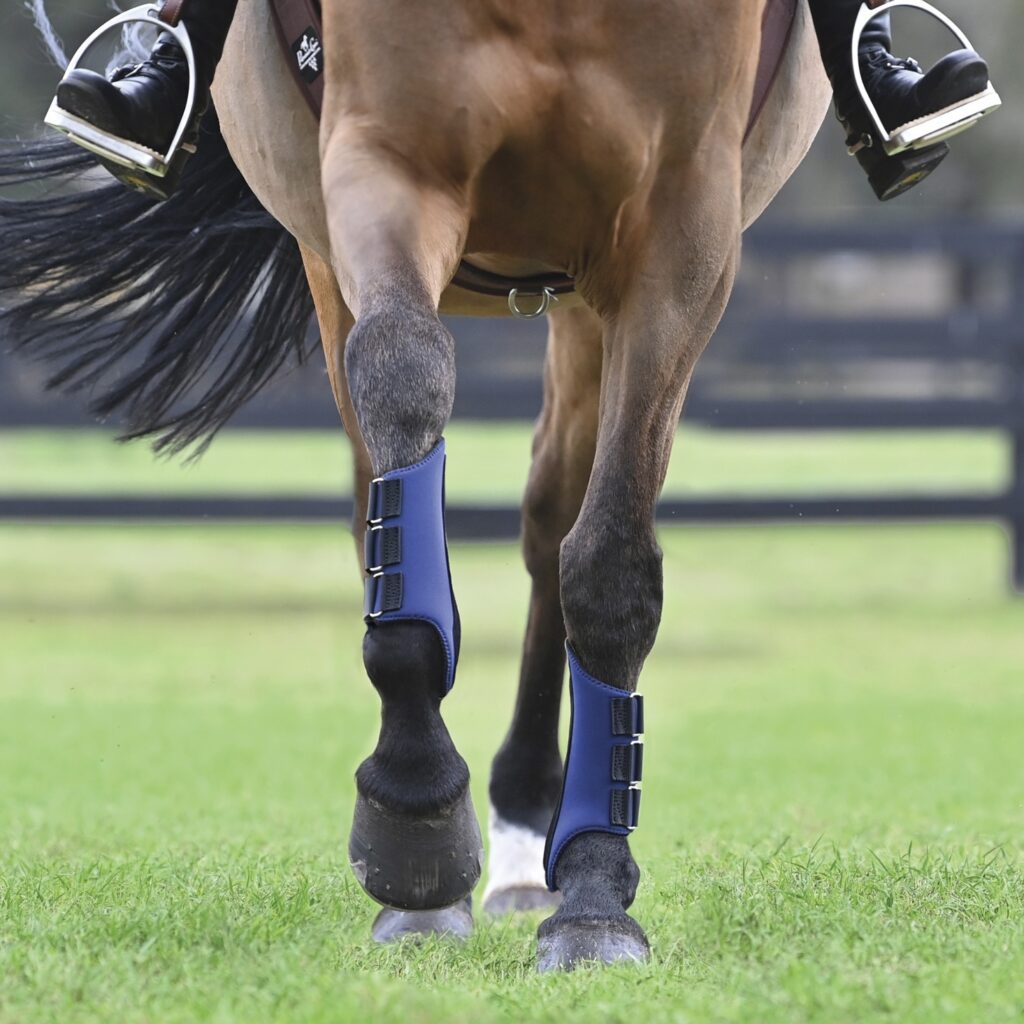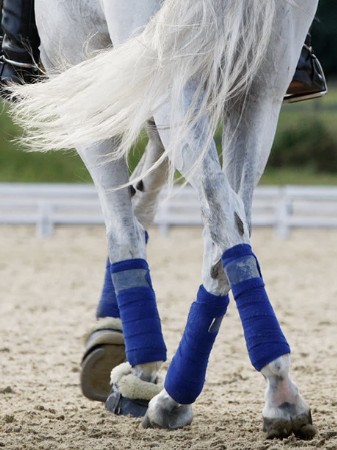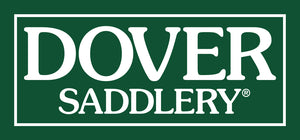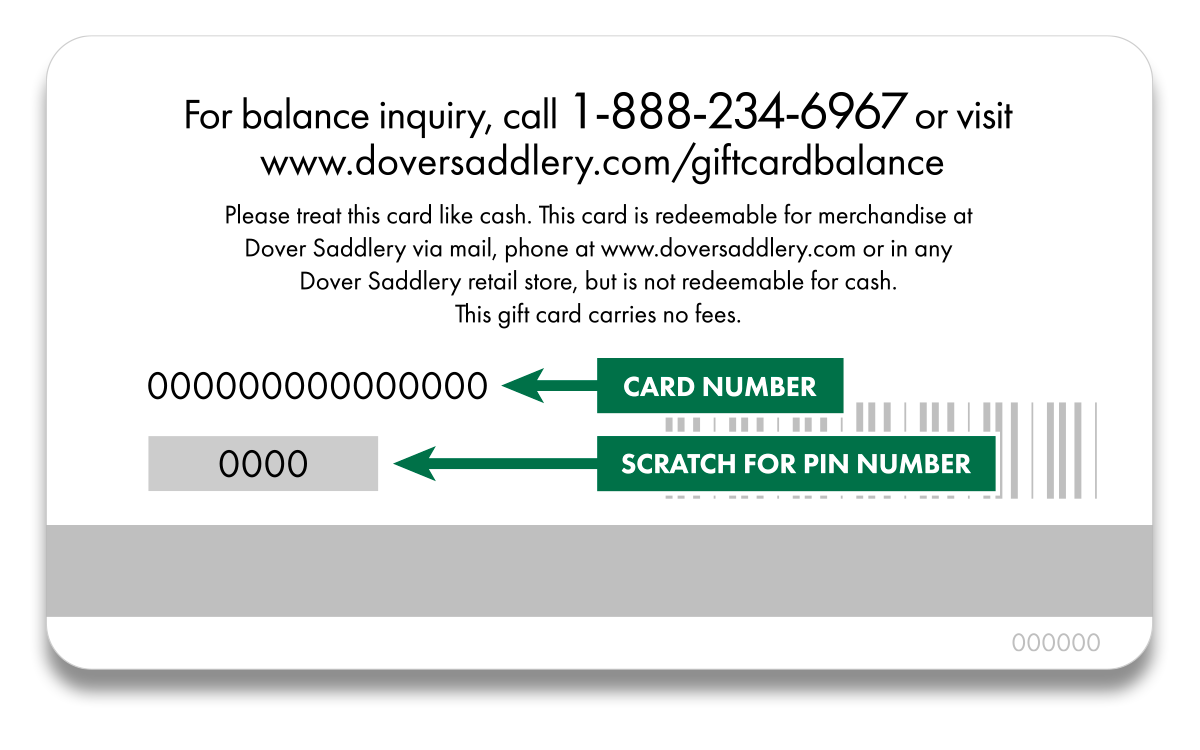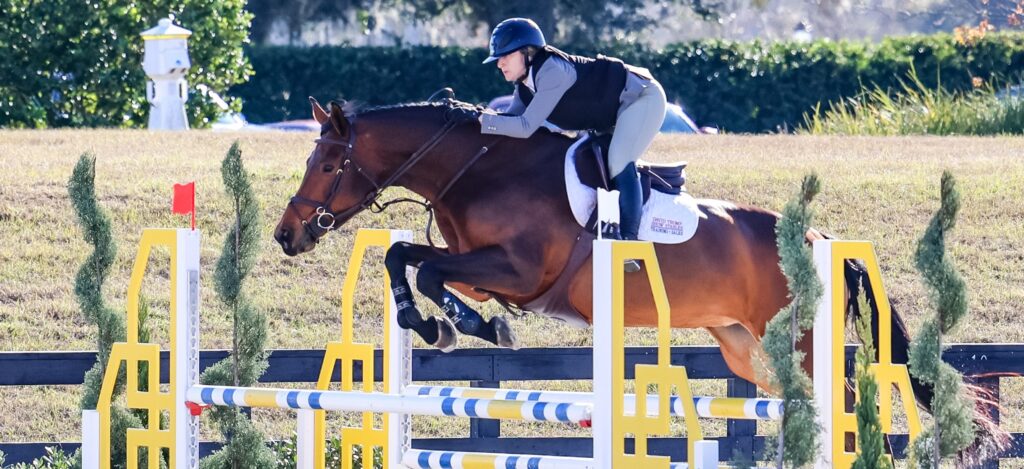
Written by Aurora Sochan, CVT, VTS-EVN, CERP
Human athletic trainers have long recognized the value of cross-training to boost performance and reduce the risk of injury and the same principles can be applied to our equine athletes. Equestrian cross-training involves incorporating a variety of exercises and disciplines into a horse’s routine to build overall athleticism, enhance performance, and support long-term soundness. By diversifying their work through activities like pole exercises, trail rides, or introducing new disciplines, horses develop greater strength, balance, coordination, and mental engagement. This well-rounded approach helps keep them fit, focused, and more enthusiastic about their job.
Benefits of cross-training:
1. Reduction of Repetitive Strain Injuries
Many common injuries of the athletic horse are due to cumulative micro-trauma to soft tissue structures, bone and joints. This is typically due to the repetitive nature of training for one discipline. Adding some cross-training elements changes what structures are absorbing the most load, decreasing the risk that this micro-trauma will manifest as significant injury.
2. Fitness
Fitness comes in many forms. A thoughtful approach is necessary to ensure that all categories of fitness are being addressed. The training of an event horse exemplifies the need for a multi-faceted approach. Dressage training represents muscular strength while stadium jumping represents speed and agility. Lastly, these horses benefit from gallop sets and sustained gallop work to represent endurance. Although these training components are standard for event horses, most horses will benefit from this varied approach.
3. Proprioception
Proprioception is the perception of where one’s own body is, in space. Good proprioception is crucial for balance, stability, coordination and minimizing risk of injury. A horse with poor proprioception may be prone to stumbling or tripping. Proprioception can be improved by working in varied terrain/footing, pole exercises or with training tools such as the Equiband system or balance pads.
4. Mental benefit
The best horse/rider partnerships involve both being engaged and enthusiastic about their sport. Any training that is too repetitive can quickly lead to burnout, mentally as well as physically. Taking your show horse on some hacks through the woods can provide much needed relaxation, while simultaneously accomplishing some hill work and varied footing. The dressage horse may enjoy pole or cavaletti exercises, with both mental and physical benefits.
5. Rider benefit
Let’s not forget that one of the single most effective ways that we can help our horse perform better, is through our own riding. We should be challenging ourselves with cross training in the same way as our equine partners. A show jumper working on dressage, for example, can improve the rider’s seat, precision of the aids and feeling of the horse’s own biomechanics. For many of us, adding in some cardio like running or cycling plus strength training at the gym, supplements our workouts in the tack.
To add some cross training elements to your horse’s program, it is important to first consider a few factors:
1. Consider your horse’s discipline. What things does he need to be able to excel in the sport? For example, dressage horses need a high level of hind-end engagement, while jumpers need short bursts of high intensity work.
2. Consider your horse. A 6-year-old thoroughbred and a 17-year-old warmblood may both be capable of performing at the same level, yet their optimal training routines can vary significantly.
3. Consider the strengths and weaknesses. Work with your veterinarian, physiotherapist and trainer to identify what gaps in training need to be filled in. Some may need to work on mobility or suppleness, while others need more stability and strength.
Finding the right cross-training program starts with making small changes and evaluating each horse’s response. Don’t be afraid to add new tools to your toolbox. Lastly, remember to have fun!


